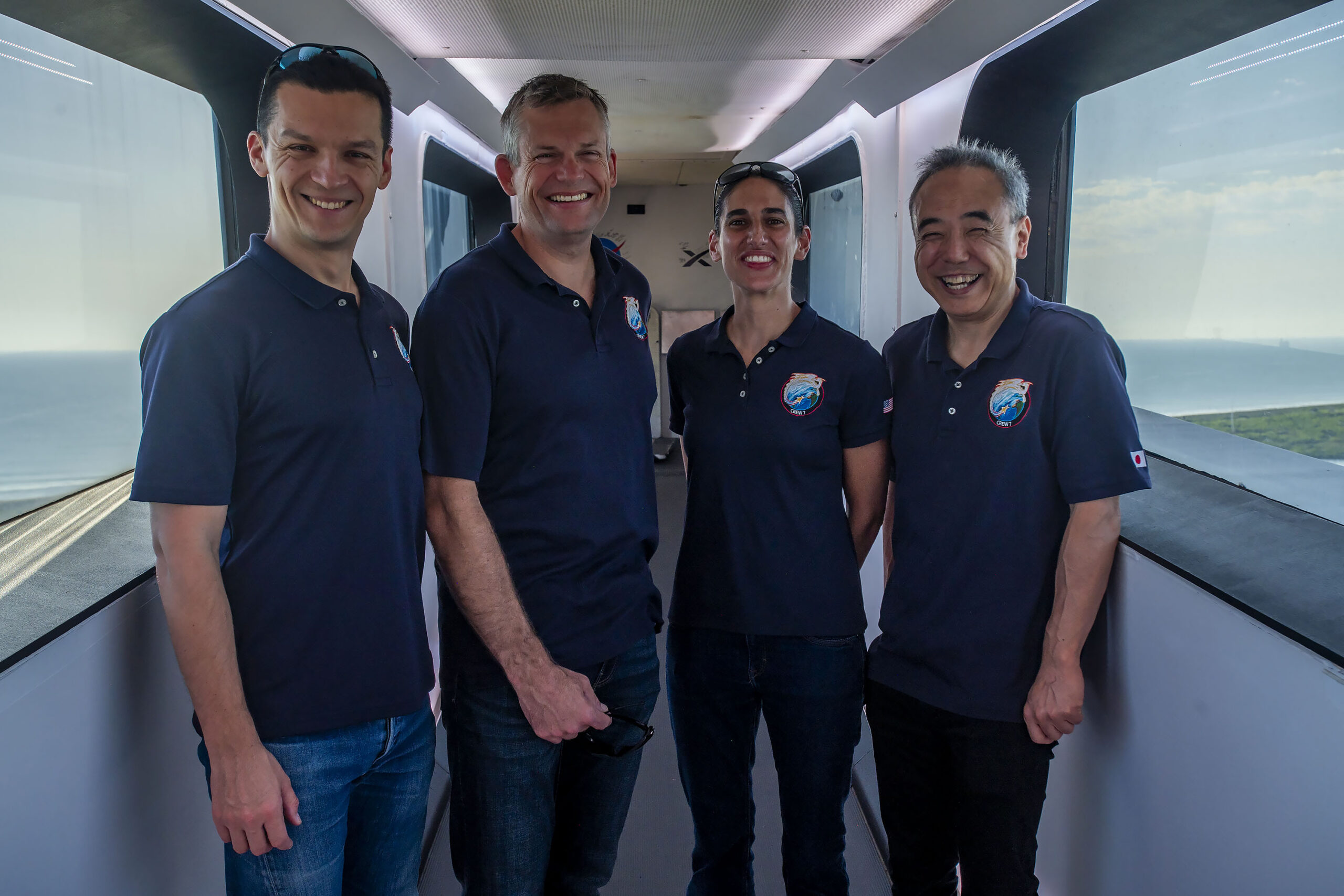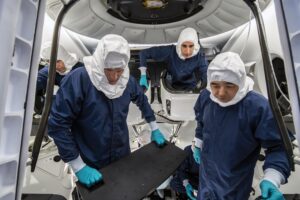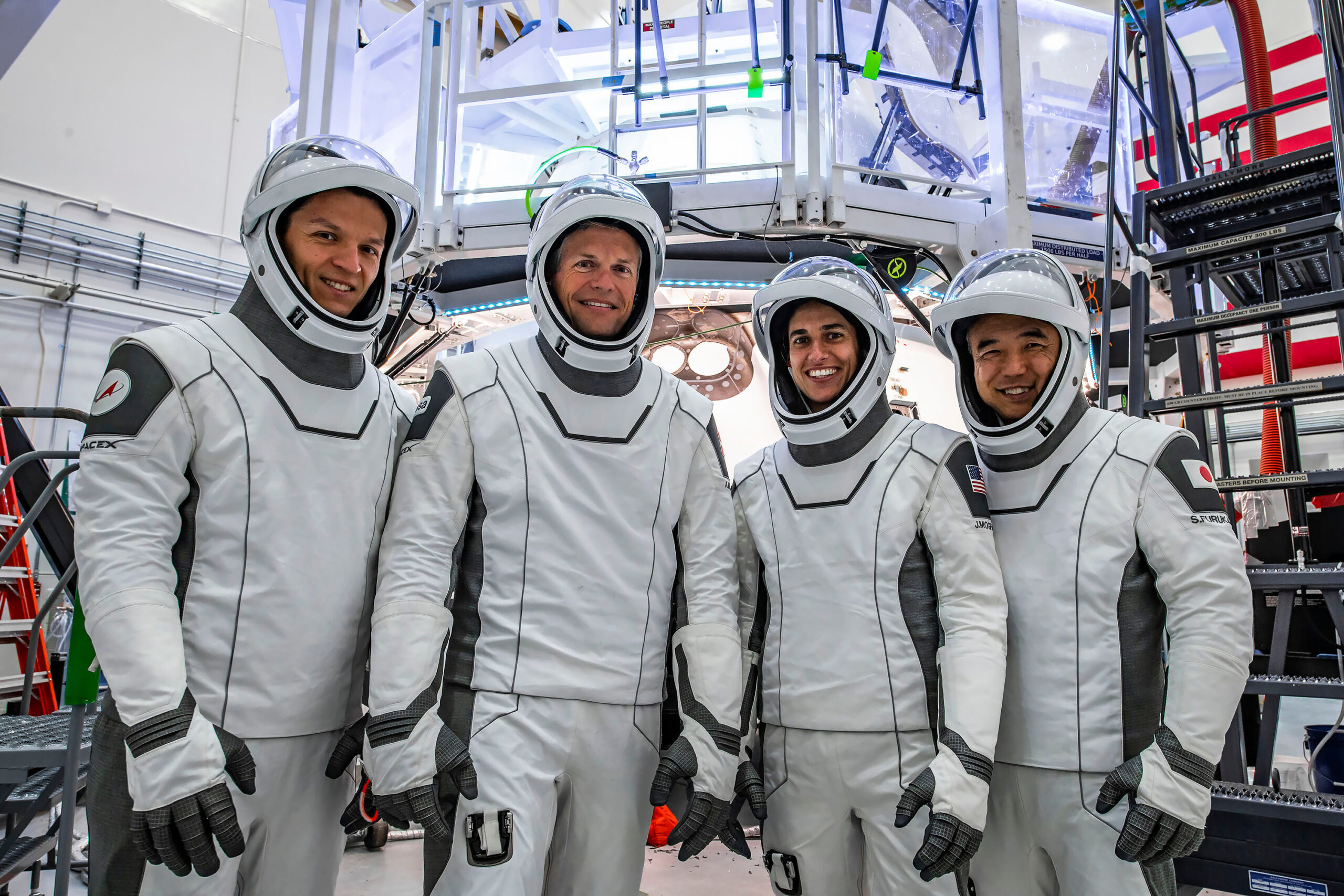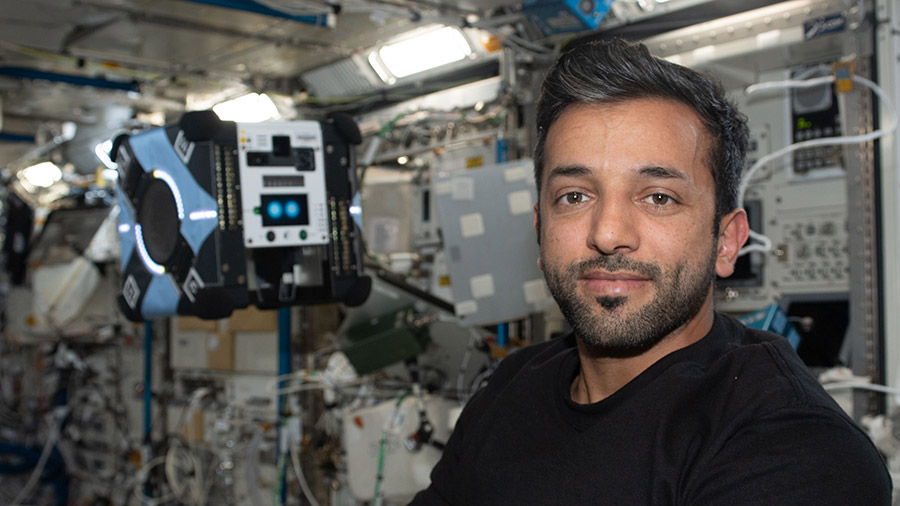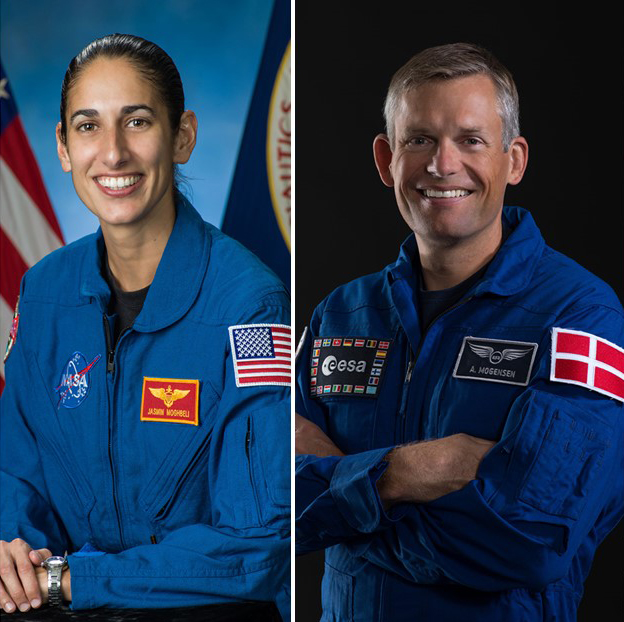
Two rockets on opposite sides of the world will launch to the International Space Station delivering cargo and a new crew this week. The first spaceship will launch from Kazakhstan Tuesday night hauling supplies to replenish the Expedition 69 crew. The second will launch from Florida sending four new crew members to the orbital lab.
The Roscosmos Progress 85 cargo craft is counting down to a launch at 9:08 p.m. EDT tonight from the Baikonur Cosmodrome in Kazakhstan. It will orbit Earth for two days before docking to the aft port of the Zvezda service module at 11:50 p.m. on Thursday. A few hours later on Friday, cosmonauts Sergey Prokopyev and Dmitri Petelin will open Progress 85’s hatches and begin unpacking about three tons of food, fuel, and supplies.
Four Commercial Crew astronauts were suited up inside the SpaceX Dragon Endurance spacecraft at NASA’s Kennedy Space Center in Florida overnight for their dry dress launch countdown. A few hours later, the Falcon 9 engines fired for 6 seconds as part of the pre-launch static fire test. SpaceX Crew-7 is slated to launch at 3:49 a.m. on Friday.
Crew-7 Commander Jasmin Moghbeli of NASA will lead Pilot Andreas Mogensen of ESA (European Space Agency), and Mission Specialists Satoshi Furukawa of JAXA (Japan Aerospace Exploration Agency) and Konstantin Borisov of Roscosmos during their ride to the orbital lab. The quartet, inside the Endurance, will dock to the Harmony module’s space-facing port at 2:02 a.m. on Saturday beginning a six-month space research mission.
Back aboard the orbital outpost on Tuesday, the seven crewmates from the U.S., UAE (United Arab Emirates), and Russia stayed focused on microgravity research and lab maintenance.
NASA Flight Engineers Frank Rubio and Stephen Bowen swapped out hardware inside the Fluids Integrated Rack for a boiling and condensation study that may improve thermal systems on Earth and in space. Rubio earlier joined UAE astronaut Sultan Alneyadi organizing cargo inside the Northrop Grumman Cygnus space freighter. Bowen began his day cleaning crew quarters ventilation systems and checking airflow sensors. Flight Engineer Woody Hoburg of NASA also assisted with the Cygnus work before configuring the Tranquility module’s Bishop airlock ahead of its depressurization.
Prokopyev attached sensors to himself for a long-running Roscosmos heart study during the morning. He later joined Petelin for ultrasound scans to observe how the digestive system adapts to weightlessness. Roscosmos Flight Engineer Andrey Fedyaev worked on orbital plumbing tasks inside the Nauka science module.
At the end of the day, Fedyaev joined Bowen, Hoburg, and Alneyadi to prepare for their upcoming departure on Sept. 1 inside the SpaceX Dragon Endeavour spacecraft and splashdown off the coast of Florida about 24 hours later. The quartet called down to ground specialists and discussed spacecraft operations during their return to Earth.
Learn more about station activities by following the space station blog, @space_station and @ISS_Research on X, as well as the ISS Facebook and ISS Instagram accounts.
Get weekly video highlights at: https://roundupreads.jsc.nasa.gov/videoupdate/
Get the latest from NASA delivered every week. Subscribe here: www.nasa.gov/subscribe



